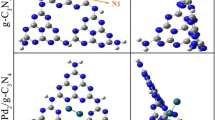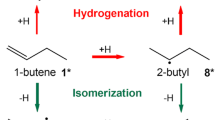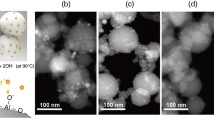Abstract.
The hydrogenation mechanism of acetylene–ethylene mixtures on Pd catalysts under different experimental conditions was studied by employing a time-dependent Monte Carlo approach set to use a fixed series of event probabilities. The dependence of the catalyst activity and selectivity on the sizes of the metal particles was simulated at microscopic level and the results, also refined by fitting procedures, suggested proper explanations for the apparent nonuniformity of the related experimental findings. The use of the steric hindrance parameter of the surface species and the available surface energy on the metallic catalyst sites was decisive for reproducing the experimental results.
Similar content being viewed by others
Author information
Authors and Affiliations
Additional information
Received: 16 September 1999 / Accepted: 3 February 2000 / Published online: 2 May 2000
Rights and permissions
About this article
Cite this article
Duca, D., Varga, Z., La Manna, G. et al. Hydrogenation of acetylene–ethylene mixtures on Pd catalysts: study of the surface mechanism by computational approaches. Metal dispersion and catalytic activity. Theor Chem Acc 104, 302–311 (2000). https://doi.org/10.1007/s002140000123
Issue Date:
DOI: https://doi.org/10.1007/s002140000123




